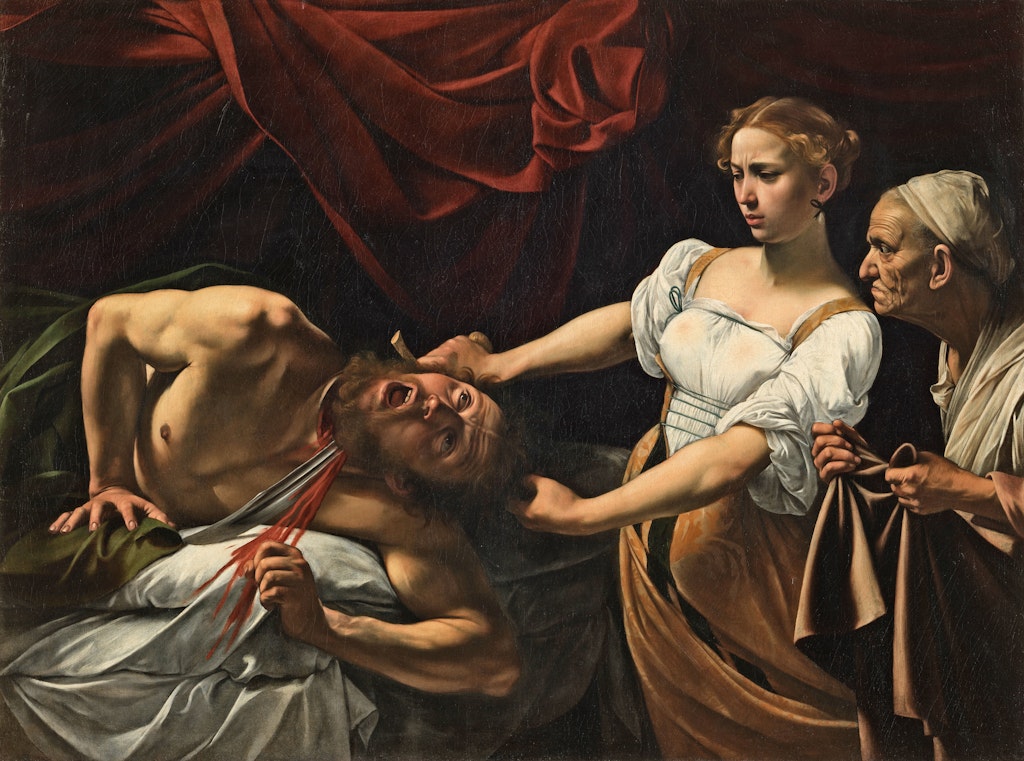This article is taken from the November 2024 issue of The Critic. To get the full magazine why not subscribe? Right now we’re offering five issues for just £10.
The Shahnameh, the “Book of Kings”, is to Iran what the Iliad or the Aeneid are to Western civilisation. It is a verse epic comprising 50,000 couplets, composed between AD 977 and 1010 by the poet Ferdowsi, who was said to have been paid a gold coin for every couplet — which perhaps helps to explain its length.
The Shahnameh mixes myth and history from the deep Persian past and contains dynastic succession, picaresque stories, moral lessons, religious instruction and heroes.
The most beautiful illustrated version of the poem was created for Shah Tahmasp, who ruled from 1524 to 1576. The pictures — of the utmost magnificence, rich with gold and lapis — were painted by 15 of the most skilled court artists of the age, and the book took from 1522 to 1540 to complete.
The finished work contained 750 folios and a staggering 258 full-page miniatures, when no other early 16th century manuscript had more than 14.
In 1568, this sumptuous artefact was presented to the new Ottoman sultan Selim II to mark his accession on the death of his father Suleiman the Magnificent; it was the most spectacular of the innumerable gifts from the Shah that took 34 camels to transport. At some point in its later history the Shahnameh was stolen from the Topkapi library before eventually ending up under the ownership of the Rothschilds. In 1954 it was put up for sale: the Metropolitan Museum in New York refused an offer to acquire it, and in 1959 it was bought for $350,000 by Arthur Houghton Junior, a glass magnate who would shortly become president of the Met.
In 1974, Houghton put the book up for sale again but with an asking price of $28.5 million there was no buyer. So in an extraordinary act of vandalism, Houghton dismembered the manuscript and sold some individual folios and illustrations and gifted others to the Met to offset against tax.
The museum ended up with 78 pictures, and other pages were dispersed to institutions in Los Angeles and Copenhagen, to the Aga Khan Museum, the British Rail Pension Fund and private collectors. What remained of the fabled manuscript were 118 paintings alongside the text and bindings. It was a sorry fall from grace for one of the most spectacular books ever made.
Then, in 1991, Oliver Hoare, an English dealer specialising in Persian art and former head of Christie’s Islamic art department, received a telephone call from an Iranian government official saying that the Shahnameh was the number one item the regime wanted to recover.
Hoare, who died in 2018, recounts his involvement in the deal that eventually returned the manuscript to the ayatollahs in The Exchange (Looking Glass Press), a winning narrative of memoir and reportage. In it he describes how, whilst his contemporaries were lured by the ashrams of India or the drugs of Afghanistan, he travelled to Iran.
From dealing in carpets, Hoare quickly became pre-eminent in the nascent field of Islamic art
Over the course of many visits, he embedded himself in both the art of the country and the jeunesse dorée that flourished under the Shah. From dealing in carpets, Hoare quickly became pre-eminent in the nascent field of Islamic art.
When Arthur Houghton Junior’s son put the Shahnameh up for sale, Hoare — with his experience and connections — was the obvious choice of agent. It was a febrile time: the 1989 fatwa against Salman Rushdie was only two years old, and relations between Tehran and America and Britain were fraught. A simple sale, with money changing hands (not that the Iranians had any), was out of the question, so Hoare hit upon the idea of an exchange.
Under the Shah, the Museum of Contemporary Art in Tehran had built a collection of Western art that included paintings by Picasso, Warhol, Pollock, Rothko, Bacon and De Kooning. All were proscribed under the religious autocracy.
Hoare proposed a swap — the Shahnameh for a selection of these “degenerate” pictures. Despite a prohibition on deaccessioning such works — tantamount to trading in pornography — Ayatollah Khamenei secretly gave his approval to the scheme.
In the end, the Iranians were willing to part with just one picture, Willem de Kooning’s Woman III, a vigorous expressionist work of 1953, showing a large-busted woman in buff tones. For Hoare there was no equivalence — the Shahnameh was one of the world’s great masterpieces, the De Kooning was just a De Kooning: “an overworked and vicious daub in industrial paint on an unprimed canvas”.
There followed innumerable meetings in Paris, Washington, Tehran and York (where one Iranian apparatchik was studying for a PhD) with unsmiling officials sporting pencil moustaches.
Eventually, in 1994, the De Kooning headed west — transported in the first-class cabin of an Air France plane with the seats removed to allow the crate to fit — and the Shahnameh went east.
The Iranians had the most spectacular iteration of their national epic; Houghton received the De Kooning and promptly made his sale. Its purchaser, David Geffen, later resold the picture to the hedge-funder Steven Cohen for $137.5 million, making it the fourteenth most expensive painting ever sold. Hoare meanwhile found himself “flavour of the regime” in Tehran and received an offer to act as an unofficial agent for them.
He remained, however, curiously uncensorious — seemingly never questioning the rights and wrongs of dealing with the men who had had his friends from pre-revolutionary days jailed or beheaded.
Returning the remains of the manuscript to the land where it was made five centuries earlier trumped all ethical considerations.
Enjoying The Critic online? It's even better in print
Try five issues of Britain’s most civilised magazine for £10
Subscribe



